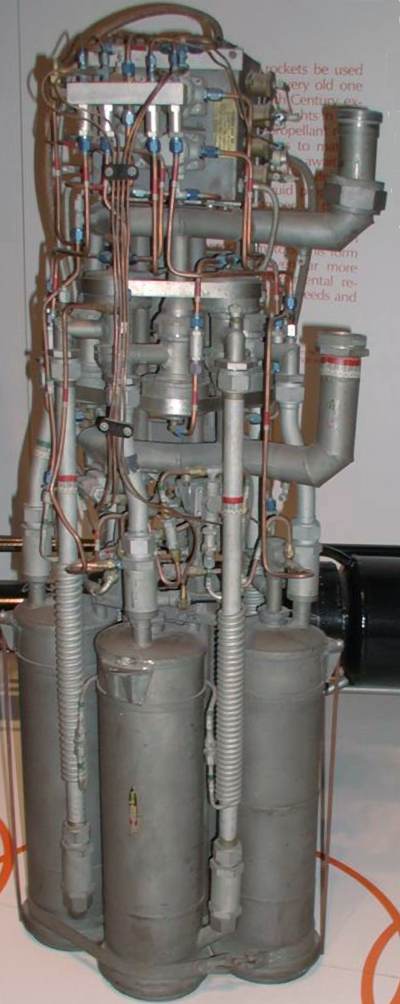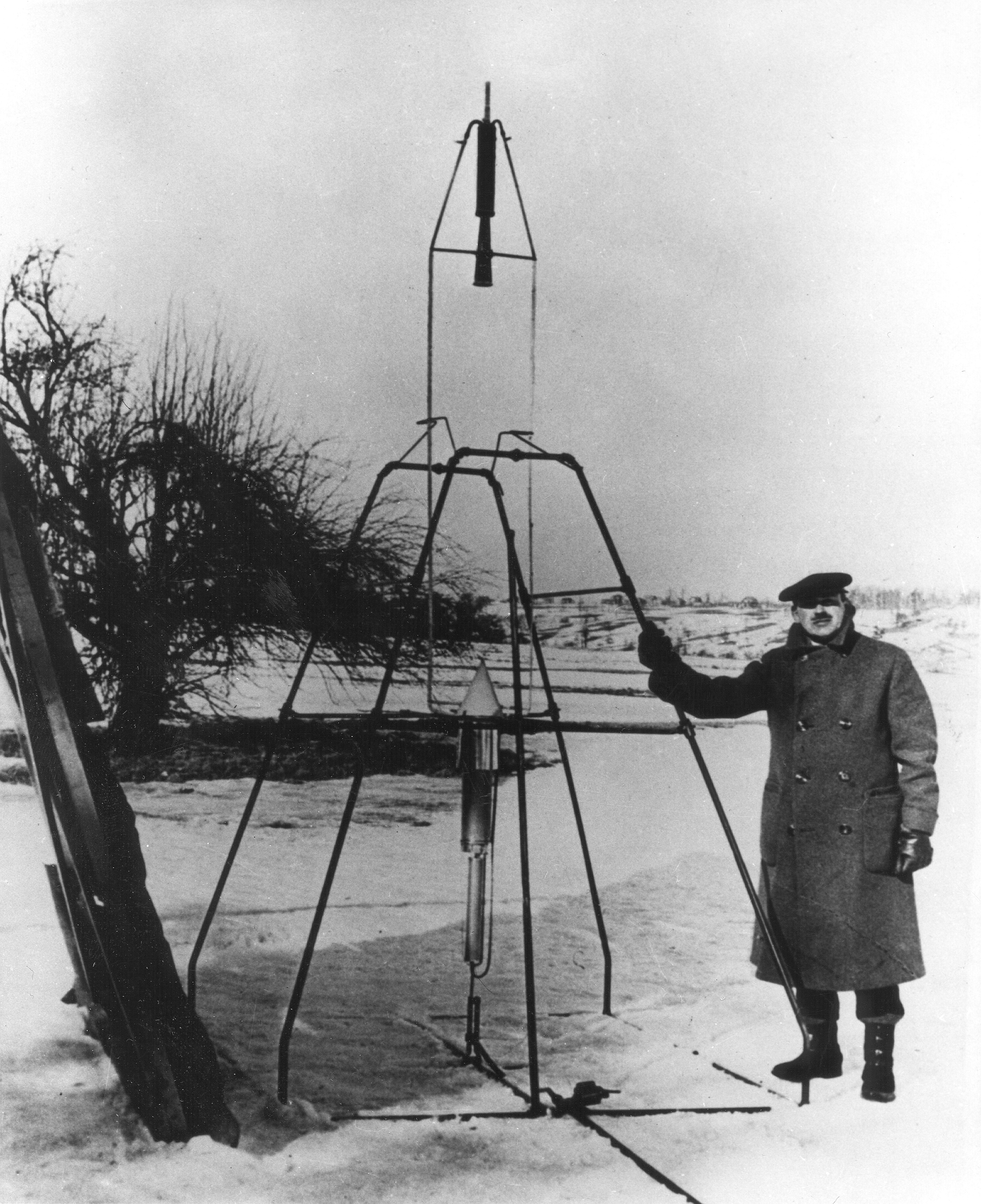|
Marshall P. Tulin
Marshall P. Tulin (14 March 1926 - 31 August 2019) was an American engineer working in Fluid dynamics, hydrodynamics. He was the Director of the Ocean Engineering Laboratory, University of California, Santa Barbara. His pioneering work in the 1950s is credited with successful developments in the theory of supercavitation for naval engineering. After graduating from MIT in 1946, he first worked on high-speed wind tunnel testing of the Bell X-1, X-1 aircraft before moving to work for the Navy at the David Taylor Model Basin. He founded a consulting company, Hydronautics Inc, with Phillip Eisenberg in 1959. He was elected to membership of the National Academy of Engineering in 1979. Selected writing * Tulin, M. P. (1963). Supercavitating flows - small perturbation theory. Laurel, Md, Hydronautics Inc. * Tulin, M. P., & Hsu, C. C. (1982). Theory of high speed displacement ships with transom sterns. Laurel, Md, Hydronautics Inc. References * Ashley, S. (2001, May). Warp Drive Un ... [...More Info...] [...Related Items...] OR: [Wikipedia] [Google] [Baidu] |
Fluid Dynamics
In physics and engineering, fluid dynamics is a subdiscipline of fluid mechanics that describes the flow of fluids— liquids and gases. It has several subdisciplines, including ''aerodynamics'' (the study of air and other gases in motion) and hydrodynamics (the study of liquids in motion). Fluid dynamics has a wide range of applications, including calculating forces and moments on aircraft, determining the mass flow rate of petroleum through pipelines, predicting weather patterns, understanding nebulae in interstellar space and modelling fission weapon detonation. Fluid dynamics offers a systematic structure—which underlies these practical disciplines—that embraces empirical and semi-empirical laws derived from flow measurement and used to solve practical problems. The solution to a fluid dynamics problem typically involves the calculation of various properties of the fluid, such as flow velocity, pressure, density, and temperature, as functions of space and time. ... [...More Info...] [...Related Items...] OR: [Wikipedia] [Google] [Baidu] |
University Of California, Santa Barbara
The University of California, Santa Barbara (UC Santa Barbara or UCSB) is a Public university, public Land-grant university, land-grant research university in Santa Barbara County, California, Santa Barbara, California with 23,196 undergraduates and 2,983 graduate students enrolled in 2021–2022. It is part of the University of California 10-university system. Tracing its roots back to 1891 as an independent teachers' college, UCSB joined the University of California system in 1944, and is the third-oldest undergraduate campus in the system, after University of California, Berkeley, UC Berkeley and University of California, Los Angeles, UCLA. Located on a WWII-era Marine air station, UC Santa Barbara is organized into three undergraduate colleges (UCSB College of Letters and Science, College of Letters and Science, UCSB College of Engineering, College of Engineering, College of Creative Studies) and two graduate schools (Gevirtz Graduate School of Education and Bren School of E ... [...More Info...] [...Related Items...] OR: [Wikipedia] [Google] [Baidu] |
Supercavitation
Supercavitation is the use of a cavitation bubble to reduce skin friction drag on a submerged object and enable high speeds. Applications include torpedoes and propellers, but in theory, the technique could be extended to an entire underwater vessel. Physical principle Cavitation is the formation of vapour bubbles in liquid caused by flow around an object. Bubbles form when water accelerates around sharp corners and the pressure drops below the vapour pressure. Pressure increases upon deceleration, and the water generally reabsorbs the vapour; however, vapour bubbles can implode and apply small concentrated impulses that may damage surfaces like ship propellers and pump impellers. The potential for vapour bubbles to form in a liquid is given by the nondimensional cavitation number. It equals local pressure minus vapour pressure, divided by dynamic pressure. At increasing depths (or pressures in piping), the potential for cavitation is lower because the difference between local ... [...More Info...] [...Related Items...] OR: [Wikipedia] [Google] [Baidu] |
Wind Tunnel
Wind tunnels are large tubes with air blowing through them which are used to replicate the interaction between air and an object flying through the air or moving along the ground. Researchers use wind tunnels to learn more about how an aircraft will fly. NASA uses wind tunnels to test scale models of aircraft and spacecraft. Some wind tunnels are large enough to contain full-size versions of vehicles. The wind tunnel moves air around an object, making it seem as if the object is flying. Most of the time, large powerful fans suck air through the tube. The object being tested is held securely inside the tunnel so that it remains stationary. The object can be an aerodynamic test object such as a cylinder or an airfoil, an individual component, a small model of the vehicle, or a full-sized vehicle. The air moving around the stationary object shows what would happen if the object was moving through the air. The motion of the air can be studied in different ways; smoke or dye can be ... [...More Info...] [...Related Items...] OR: [Wikipedia] [Google] [Baidu] |
Bell X-1
The Bell X-1 (Bell Model 44) is a rocket engine–powered aircraft, designated originally as the XS-1, and was a joint National Advisory Committee for Aeronautics– U.S. Army Air Forces–U.S. Air Force supersonic research project built by Bell Aircraft. Conceived during 1944 and designed and built in 1945, it achieved a speed of nearly in 1948. A derivative of this same design, the Bell X-1A, having greater fuel capacity and hence longer rocket burning time, exceeded in 1954. The X-1 aircraft #46-062, nicknamed ''Glamorous Glennis'' and piloted by Chuck Yeager, was the first manned airplane to exceed the speed of sound in level flight and was the first of the X-planes, a series of American experimental rocket planes (and non-rocket planes) designed for testing new technologies. Design and development Parallel development In 1942, the United Kingdom's Ministry of Aviation began a top secret project with Miles Aircraft to develop the world's first aircraft capable of brea ... [...More Info...] [...Related Items...] OR: [Wikipedia] [Google] [Baidu] |
David Taylor Model Basin
The David Taylor Model Basin (DTMB) is one of the largest ship model basins—test facilities for the development of ship design—in the world. DTMB is a field activity of the Carderock Division of the Naval Surface Warfare Center. History In 1896, David Watson Taylor designed and supervised construction of the Washington Navy Yard's Experimental Model Basin which was at that time the best facility in the world. That facility was a significant design testing capability before, during, and after World War I. Inadequacies in that facility led the navy to look for a new model capability. The new navy modeling facility – named for David Taylor – was built in 1939 in today's community of Carderock just west of Bethesda, Maryland in Montgomery County. The Carderock facility contains multiple test basins (towing tanks for models) designed for a variety of testing capabilities. DTMB has strongly influenced naval architecture for 70 years. Technical capabilitie ... [...More Info...] [...Related Items...] OR: [Wikipedia] [Google] [Baidu] |
Phillip Eisenberg
Philip, also Phillip, is a male given name, derived from the Greek (''Philippos'', lit. "horse-loving" or "fond of horses"), from a compound of (''philos'', "dear", "loved", "loving") and (''hippos'', "horse"). Prominent Philips who popularized the name include kings of Macedonia and one of the apostles of early Christianity. ''Philip'' has many alternative spellings. One derivation often used as a surname is Phillips. It was also found during ancient Greek times with two Ps as Philippides and Philippos. It has many diminutive (or even hypocoristic) forms including Phil, Philly, Lip, Pip, Pep or Peps. There are also feminine forms such as Philippine and Philippa. Antiquity Kings of Macedon * Philip I of Macedon * Philip II of Macedon, father of Alexander the Great * Philip III of Macedon, half-brother of Alexander the Great * Philip IV of Macedon * Philip V of Macedon New Testament * Philip the Apostle * Philip the Evangelist Others * Philippus of Croton (c. 6th centur ... [...More Info...] [...Related Items...] OR: [Wikipedia] [Google] [Baidu] |
National Academy Of Engineering
The National Academy of Engineering (NAE) is an American nonprofit, non-governmental organization. The National Academy of Engineering is part of the National Academies of Sciences, Engineering, and Medicine, along with the National Academy of Sciences (NAS), the National Academy of Medicine, and the National Research Council (now the program units of NASEM). The NAE operates engineering programs aimed at meeting national needs, encourages education and research, and recognizes the superior achievements of engineers. New members are annually elected by current members, based on their distinguished and continuing achievements in original research. The NAE is autonomous in its administration and in the selection of its members, sharing with the rest of the National Academies the role of advising the federal government. History The National Academy of Sciences was created by an Act of Incorporation dated March 3, 1863, which was signed by then President of the United States ... [...More Info...] [...Related Items...] OR: [Wikipedia] [Google] [Baidu] |
21st-century American Engineers
The 1st century was the century spanning AD 1 ( I) through AD 100 ( C) according to the Julian calendar. It is often written as the or to distinguish it from the 1st century BC (or BCE) which preceded it. The 1st century is considered part of the Classical era, epoch, or historical period. The 1st century also saw the appearance of Christianity. During this period, Europe, North Africa and the Near East fell under increasing domination by the Roman Empire, which continued expanding, most notably conquering Britain under the emperor Claudius (AD 43). The reforms introduced by Augustus during his long reign stabilized the empire after the turmoil of the previous century's civil wars. Later in the century the Julio-Claudian dynasty, which had been founded by Augustus, came to an end with the suicide of Nero in AD 68. There followed the famous Year of Four Emperors, a brief period of civil war and instability, which was finally brought to an end by Vespasian, ninth Roman emperor, ... [...More Info...] [...Related Items...] OR: [Wikipedia] [Google] [Baidu] |
1926 Births
Events January * January 3 – Theodoros Pangalos (general), Theodoros Pangalos declares himself dictator in Greece. * January 8 **Abdul-Aziz ibn Saud is crowned King of Kingdom of Hejaz, Hejaz. ** Bảo Đại, Crown Prince Nguyễn Phúc Vĩnh Thuy ascends the throne, the last monarch of Vietnam. * January 12 – Freeman Gosden and Charles Correll premiere their radio program ''Sam 'n' Henry'', in which the two white performers portray two black characters from Harlem looking to strike it rich in the big city (it is a precursor to Gosden and Correll's more popular later program, ''Amos 'n' Andy''). * January 16 – A BBC comic radio play broadcast by Ronald Knox, about a workers' revolution, causes a panic in London. * January 21 – The Belgian Parliament accepts the Locarno Treaties. * January 26 – Scottish inventor John Logie Baird demonstrates a mechanical television system at his London laboratory for members of the Royal Institution and a report ... [...More Info...] [...Related Items...] OR: [Wikipedia] [Google] [Baidu] |
2019 Deaths
This is a list of deaths of notable people, organised by year. New deaths articles are added to their respective month (e.g., Deaths in ) and then linked here. 2022 2021 2020 2019 2018 2017 2016 2015 2014 2013 2012 2011 2010 2009 2008 2007 2006 2005 2004 2003 2002 2001 2000 1999 1998 1997 1996 1995 1994 1993 1992 1991 1990 1989 1988 1987 See also * Lists of deaths by day The following pages, corresponding to the Gregorian calendar, list the historical events, births, deaths, and holidays and observances of the specified day of the year: Footnotes See also * Leap year * List of calendars * List of non-standard ... * Deaths by year {{DEFAULTSORT:deaths by year ... [...More Info...] [...Related Items...] OR: [Wikipedia] [Google] [Baidu] |




